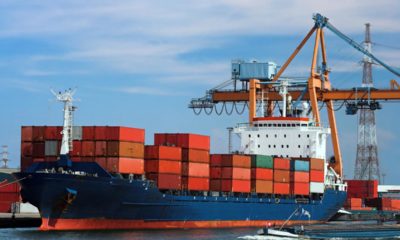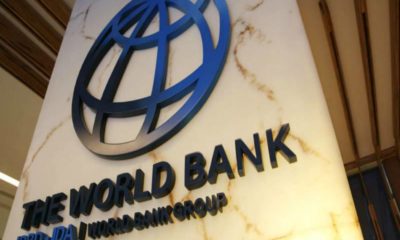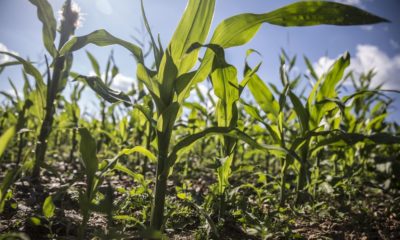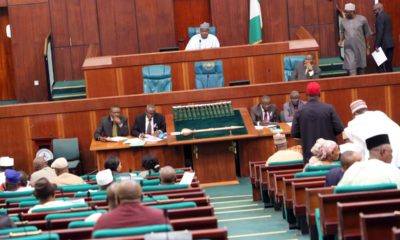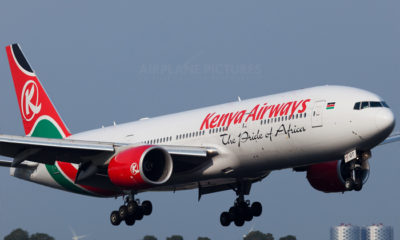Economy
As Third Mainland Bridge Reopens
Published
7 years agoon
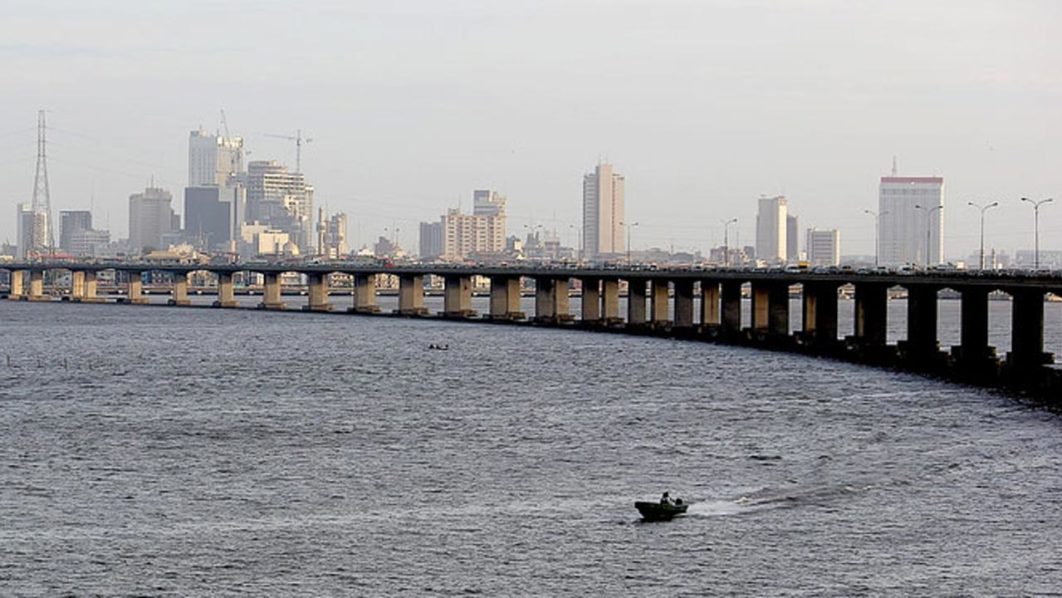
- As Third Mainland Bridge Reopens
The Third Mainland Bridge was reopened 5pm on Sunday by the Federal and the Lagos State governments. It was some eight hours earlier than the 00.00 hours (12 a.m.) deadline earlier slated for the exercise.
The early reopening was received with huge excitement across the state as motorists heaved a sigh of relief at the multiplier effect of the reopening on travel pattern.
The last 72 hours had been tortuous for motorists, who spent several hours on the alternative routes identified by the state government.
Despite the huge deployment of policemen and traffic agencies to manage the fallout of the traffic, it remained a major crisis all through the weekend, with many corporate firms with offices on the mainland directing its workers to resume in those offices and avoid the Lagos Island if the bridge was not reopened on schedule by the government at the weekend.
For a country noted for its horrible maintenance culture, the seriousness with which the government had attended to auditing the integrity of the Third Mainland Bridge has elicited renewed interest.
The last time the bridge went through a comprehensive maintenance was 2012, when the then government of President Goodluck Jonathan closed the bridge down for four months between July and November.
The three-day closure, which it said was needed for integrity checks, was meant to again check all the 11 expansion joints for wears and tears, in order to eventually determine the kind of maintenance that would be needed to be carried out.
Each of the expansion joints was comprehensively tested during the exercise while required remedial works have been noted, the Permanent Secretary Ministry of Transportation Dr Taiwo Salaam observed on Sunday.
Assessing the scope and success of the work, Salaam said: “We finished work on all the joints by 2.30pm on Sunday and the bridge was shortly thereafter opened again for vehicular traffic.”
According to him, it is after the completion of the exercise that experts in the Federal Ministry of Works are going to meet on the reports collated during this three- day exercise to know the type of remedial action that the bridge would need this time around as well as the time duration for such an exercise.
The Federal Controller of Works, Fred Adedamola Kuti, said the government had returned to the 12 kilometre long bridge because some of the bridge’s expansion joints have started showing signs of stress.
Kuti further assured that a more comprehensive test would be carried out on the bridge, that after the surface work, divers would go under the bridge to determine the wellbeing of the foundation, beams, piers and the stanchions.
On May 4, this year, the Federal Executive Council had approved $53 million (about N18.8 billion) for a comprehensive maintenance of the Third Mainland Bridge.
The required maintenance, which is expected to last for 27 months according to the Minister of Power Works and Housing Babatunde Fashola, is to be handled by the Italian company Borini Prono.
Detailing the magnitude of the construction to be carried out and the reason repairs will last for 27 months,Fashola said the project will involve the replacement of 33 piles at the first phase. A total of 177 piles would be strengthened in all and expansion joints linking the bridge together would be assessed with a view to replacing the obsolete ones.
Happenings in other lands
Government’s commitment to ensure the wellbeing of the bridge was validated with the recent collapse of the Genoa Morandi Bridge in Italy early in the month.
Eleven years ago, an eight-land interstate highway bridge over the Mississippi River also collapsed in Minneapolis, killing 13 people.
The Financial Times asserted after the Genoa disaster that Italy officials knew of the impending disaster six months before it collapsed but did nothing to limit traffic on the sick bridge.
Like Morandi bridge, which killed at least 38 people, the Minneapolis bridge was opened in 1967.
Just as the US National Transportation Safety Board concluded that a design flaw in the bridge had contributed to its collapse in 2007, so are Italian prosecutors investigating whether the Genoa disaster was not as a result of a similar cause. In each case, the volume of traffic passing over the bridge in the years before its collapsed was much greater than had been foreseen during its construction in the 1960s.
Similar trend, especially in traffic volume, which was fingered in the above instances has started manifesting on the third Mainland Bridge.
While the volume of vehicles at the point of construction was less than 10,000 vehicle count on the Third Mainland Bridge, as at August it is said to be close to 700,000 per day.
Disclosing this last week, Salaam said: “On the average, 652,800 vehicles use the bridge daily”, a development which makes remedial work on the bridge extremely imperative to prevent its collapse.
The $1 billion bridge completed in 1990, and reputed as the second longest bridge in Africa and the longest in West Africa, began to exhibit signs of stress in 2006, when commuters began to report that the bridge was vibrating. Remedial works began on different portions of the bridge, leading to partial closures at different times in 2007 and 2008, while a maintenance work was carried out in 2012.
The Director of Highways and Bridges in the Federal Ministry of Works, Adetokunbo Shogbesan, assured that the maintenance test on the Third Mainland Bridge is aimed at giving a comprehensive facelift to the bridge.
He said most of the bridges in the state, built by the Federal Government have between 50 to 60 years lifespan. “If these bridges are better maintained, and human abuses are minimized, they could last even longer.
Comparing the government’s response to what happened in Italy, Shogbesan said the Italian government neglected maintenance culture. They failed to carry out regular integrity test, which the Nigerian government continued to carry out from time to time.
“We will continue to assure Nigerians that the government is committed to ensuring that integrity tests will continue on all the bridges every five to 10 years, while we would continue to appeal to the government to help ensure that dead weights on the bridges are evacuated before they endanger the wellbeing of the bridges.”
Salaam confirmed that the Federal Government has continued to carry out routine maintenance of all its bridge assets in the state. He said Eko Bridge, which was the oldest, construction of which started in 1950, the Carter Bridge and the Lekki-Ikoyi Bridge, are all in stable shape.
He assured Lagosians that the government is working on a multi-pronged approached aimed at evacuating the trailers and tankers off the roads and bridges, to a much organised holding bay, from where they would move upon a call up system to Apapa to either lift petroleum products or drop their empty containers.
After the trailers were evacuated from the bridges, the government, he said, would conduct a comprehensive audit of wellbeing on all the bridges to know the impact of these dead weights on them as well as carry out comprehensive repair needed to keep them fit again.
The Commissioner for Transportation Ladi Lawanson, who thanked Lagosians for their perseverance, said the government would continue to work in their collective interest.
He disclosed that the government is determined to promote waterway transportation, adding that concrete actions would begin to manifest on the waterways in the next two years.
He said government is dredging its waterways, cleaning the waterways of all ship wrecks, charting water routes, and bringing in new boats. He disclosed that discussion is at advanced stage with investors to commence commercial passenger operation on the waterways.
“The Lagos State Government is determined to shift attention from the roads to the waterways. In the next two years, Lagosians would begin to see our actions in this direction, as all negotiations would have crystallised and begin to manifest,” Lawanson said.
Though both governments, still kept the date of actual repair work on the bridge under wraps, it is almost certain that it would not occur until the trailers and tankers that had seized the bridges were moved out of the roads to holding bays.
Is the CEO and Founder of Investors King Limited. He is a seasoned foreign exchange research analyst and a published author on Yahoo Finance, Business Insider, Nasdaq, Entrepreneur.com, Investorplace, and other prominent platforms. With over two decades of experience in global financial markets, Olukoya is well-recognized in the industry.

You may like
-
Trump’s 14% Tariff on Nigerian Imports Raises Fresh Concerns for Trade and Economic Stability
-
Nigeria Secures $1.08 Billion World Bank Support to Boost Education and Combat Malnutrition
-
Trump Declares Economic Emergency Introduces Tariffs on Nigerian Exports
-
Nigeria, Brazil Partner on $1.1bn Agricultural Revolution Plan
-
Nigeria Considers Creation of 31 New States Despite Economic Challenges
-
Visa Denial Sparks Airport Drama as Kenya Airways Defends Staff

